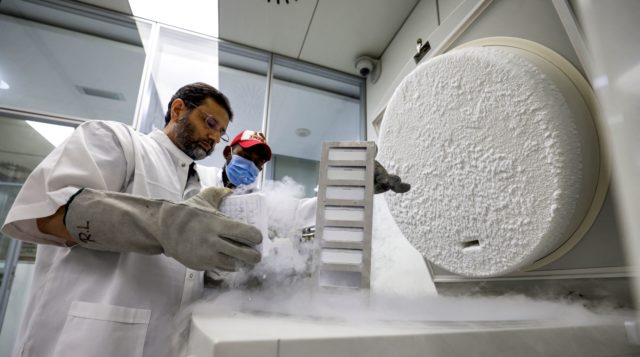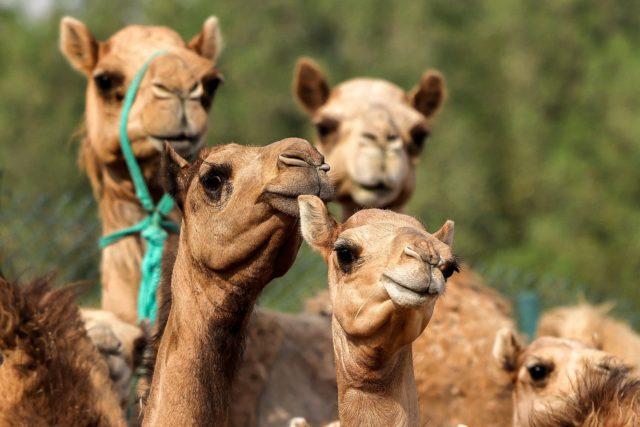Dubai has been cloning camels for almost 15 years. After improving upon the science, the practice has become a business venture. Camel cloning is done for a multitude of reasons, including the potential betterment of the species, as well as for more leisurely motivations. As the process continues to develop, we can only expect to see more clones out in the world, but who can tell when they all look the same?
 Dr. Nisar Ahmad Wani, scientific director of Dubai’s Reproductive Biotechnology Center, checking frozen samples. (Photo Credit: KARIM SAHIB / AFP / Getty Images)
Dr. Nisar Ahmad Wani, scientific director of Dubai’s Reproductive Biotechnology Center, checking frozen samples. (Photo Credit: KARIM SAHIB / AFP / Getty Images)
In 2009, Nisar Ahmad Wani succeeded in cloning the world’s first camel, named Injaz. The scientific achievement was carried out at the Reproductive Biotechnology Center in Dubai. Injaz produced three offspring, proving that cloned camels could naturally conceive.
It was during her fourth pregnancy that complications arose, as she was carrying a calf that was too big for her. This caused both Injaz and her unborn calf to die. Her passing had a profound effect on Wani, who explained in an interview with Wired, “It’s hard work to produce a camel and when it dies, I feel pain.”
Since producing the first cloned camel, Wani has become the Reproductive Biotechnology Center’s scientific director, and he and his team continue to produce 20-25 cloned dromedary camels every year. They’re also capable of cloning other animals, such as buffalo and sheep.
This futuristic process is achieved by gathering DNA from the donor animal and introducing it to an egg, as Wani explained to CNN. “The DNA from the somatic [non-reproductive] cell starts behaving like the DNA of an embryo. Once activated, they are cultured in a lab for seven to eight days before being transferred to the uterus of a surrogate mother.”
Once the baby camel is born, it has all of the genes of the donor animal.
Camel cloning has become a profitable business Cloned camel calves at Dubai’s Reproductive Biotechnology Center. (Photo Credit: KARIM SAHIB / AFP / Getty Images)
Cloned camel calves at Dubai’s Reproductive Biotechnology Center. (Photo Credit: KARIM SAHIB / AFP / Getty Images)
As incredible a scientific feat as camel cloning is, the Reproductive Biotechnology Center wasn’t established for the advancement of science. Instead, the Crown Prince of Dubai opened it to clone top-level racing camels. Cloning creates the same animal multiple times over, giving a higher chance of owning an equally successful racing camel if the DNA used is from a victor.